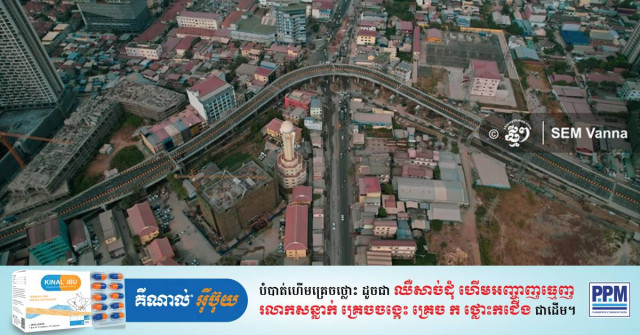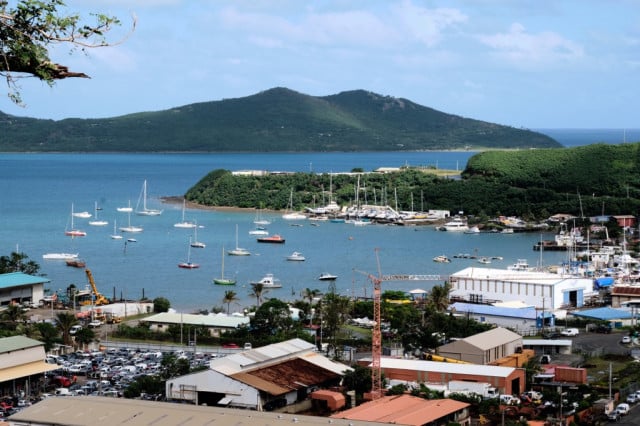Hydropower Plant Transparency Urged

- By Teng Yalirozy
- January 20, 2022 6:50 PM
Environment impact should be public: expert
PHNOM PENH--Experts and activists have called for transparency over the Chinese state-owned Tatay Hydropower Plant Project in Koh Kong province and for its environmental impact assessment to be made public.
The 150MW project, worth $389 million, on the Tatay river in northern Thmar Bang and Koh Kong districts, was officially approved by the Council for the Development of Cambodia (CDC) on Jan. 17.
The project is owned by local subsidiary Cambodian Tatay Hydropower Co. and will be developed by China National Heavy Machinery Corporation (CHMC).
An investment agreement was signed on Dec. 8 last year between the Ministry of Mines and Energy and CHMC under a build-operate-transfer scheme, following the approval from the Council of Ministers last October.
The project is based on a 39-year concession, with four years for construction and 35 years for the operation, an official Cabinet release said.
Environmental expert Hem Udom said Cambodia needs to generate more energy to respond to increased demand but he questioned why Cambodia chose to produce energy from hydropower and not from other clean and renewable sources such as solar or wind.
“I think Cambodia chose hydropower perhaps due to the lack of environmental impact assessments in a strategic way,” he said.
He rarely saw governments conducting environmental impact assessments strategically, meaning looking at a broader perspective than one project at a time.
Transparency and distribution of environmental impact assessments were significant to mitigate the environmental and social effects of the dam, he said, adding that the budget for the project must be managed with transparency and accountability.
“We must know that the decision is made based on what or whether an environmental impact assessment is conducted properly,” Udom said.
Good governance was needed no matter how advanced the technology was, while participation from the public was equally crucial.
“We also need to know to what extent the government or the decision-makers accept the impact of the dam proposed by a local community or civil society organizations.”
Heng Kimhong, research and advocacy manager for the Cambodia Youth Network (CYN), said he wants to see the government conducting an environmental impact assessment with the participation of relevant people, including NGOs working in the Tatay area. He said the assessment must be transparent.
“The impact and other challenges should be carefully measured to ensure that the construction of the dam and the dam itself do not greatly affect the environment and the biodiversity in the area as well as local people living along the river or enjoying the benefit of nature,” he said.
Reasonable and fair compensation must be given, according to the law, to the affected people, he said. Construction must be stopped or suspended if the environmental impact assessment shows a big impact on the environment and local people.
Sok Sothy, Koh Kong provincial deputy governor, said that he did not know about the environmental assessment so he could not talk about the impact. He knew only that the dam affected seven hectares of local people’s land.
The start of construction was uncertain but would be when the compensation has been accepted. He did not specify how much compensation there would be.
Sothy referred questions to the Ministry of Environment but the ministry did not respond to questions on the environmental impact assessment.
CDC secretary-general Sok Chenda Sophea said he could not provide the result of the assessment and referred questions to the Ministry of Mines and Energy.
Victor Jona, director-general of the General Department of Energy and a spokesperson at the Ministry of Mines and Energy, could not be reached for comment.
Ham Oudom said he could not say what the impact would be because it had to be measured technically and strategically measured.
“If we look at the Lower Se San 2 Dam on the Se San River in Stung Treng province, residents living in the upper part of the dam have been affected by floods caused by overflow water in the reservoir,” he said.
“The fish stock has also been affected while deforestation and wild animal hunting occurred during the construction.”
Heng Kimhong said the dam could affect the biodiversity in the Tatay river and in the natural reserve area of the Cardamom Mountain.
Water on the Tatay river is part of the flow from the Cardamom Mountain and was important for biodiversity in the upper stream.
“So many natural resources and biodiversity will be affected if the dam is built,” he said. “We are concerned that the dam could affect the forest, natural resources and animal habitat, especially if it disrupts the natural flow of fish.”
Power from the dam will be sold to Electricite du Cambodge (EDC) for 7.92 US cents per kWh. The base annual output of electricity sold to EDC will be an average of 527 million kWh, said the October Cabinet release.















